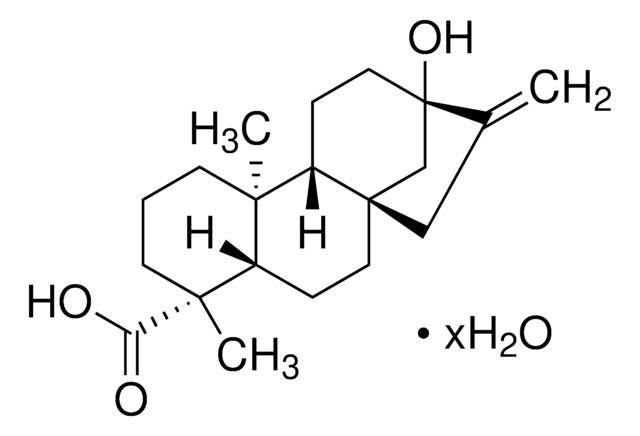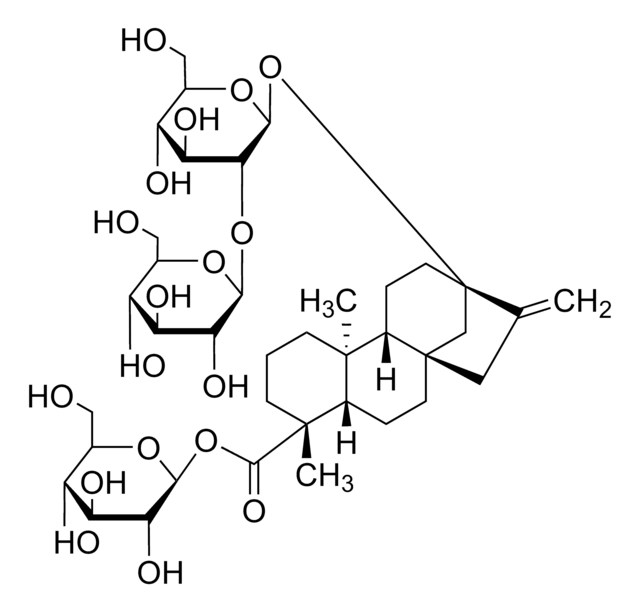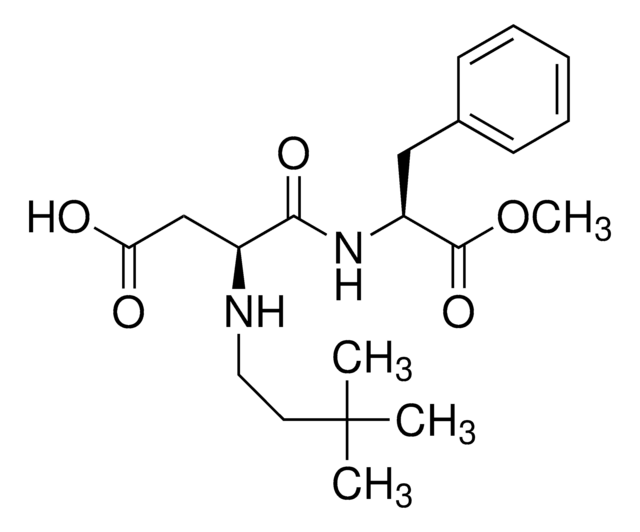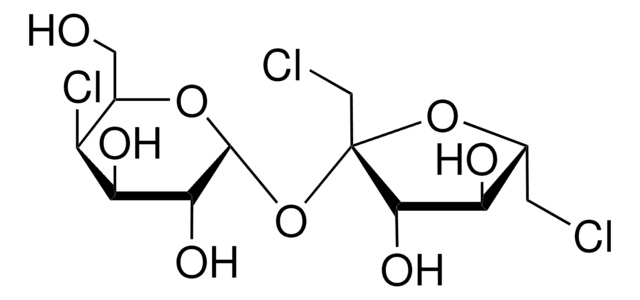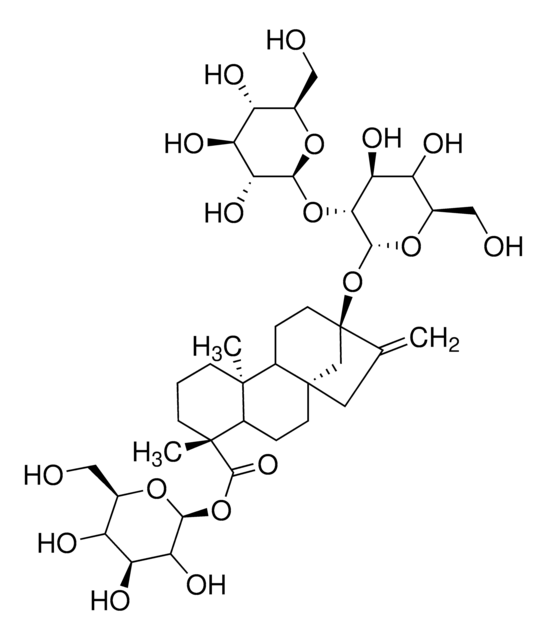19345
Steviol
analytical standard
Synonym(e):
(4α)-13-Hydroxykaur-16-en-18-säure, ent-13-Hydroxykauran-16-en-19-säure, NSC 226902
About This Item
Empfohlene Produkte
Qualität
analytical standard
Assay
≥98.0% (HPLC)
Haltbarkeit
limited shelf life, expiry date on the label
Methode(n)
HPLC: suitable
gas chromatography (GC): suitable
Verunreinigungen
≤5.0% water (Karl Fischer)
Anwendung(en)
cleaning products
cosmetics
food and beverages
personal care
Format
neat
SMILES String
C[C@@]12CCC[C@](C)([C@H]1CC[C@]34CC(=C)[C@](O)(CC[C@@H]23)C4)C(O)=O
InChI
1S/C20H30O3/c1-13-11-19-9-5-14-17(2,7-4-8-18(14,3)16(21)22)15(19)6-10-20(13,23)12-19/h14-15,23H,1,4-12H2,2-3H3,(H,21,22)/t14-,15-,17+,18+,19+,20-/m0/s1
InChIKey
QFVOYBUQQBFCRH-VQSWZGCSSA-N
Suchen Sie nach ähnlichen Produkten? Aufrufen Leitfaden zum Produktvergleich
Allgemeine Beschreibung
Anwendung
Lagerklassenschlüssel
11 - Combustible Solids
WGK
WGK 1
Flammpunkt (°F)
Not applicable
Flammpunkt (°C)
Not applicable
Hier finden Sie alle aktuellen Versionen:
Besitzen Sie dieses Produkt bereits?
In der Dokumentenbibliothek finden Sie die Dokumentation zu den Produkten, die Sie kürzlich erworben haben.
Kunden haben sich ebenfalls angesehen
Artikel
HPTLC is an efficient method to determine Steviol Glycosides content in Stevia using our HPTLC plates and reference materials, including a new introduced Stevia extract reference material.
Unser Team von Wissenschaftlern verfügt über Erfahrung in allen Forschungsbereichen einschließlich Life Science, Materialwissenschaften, chemischer Synthese, Chromatographie, Analytik und vielen mehr..
Setzen Sie sich mit dem technischen Dienst in Verbindung.

